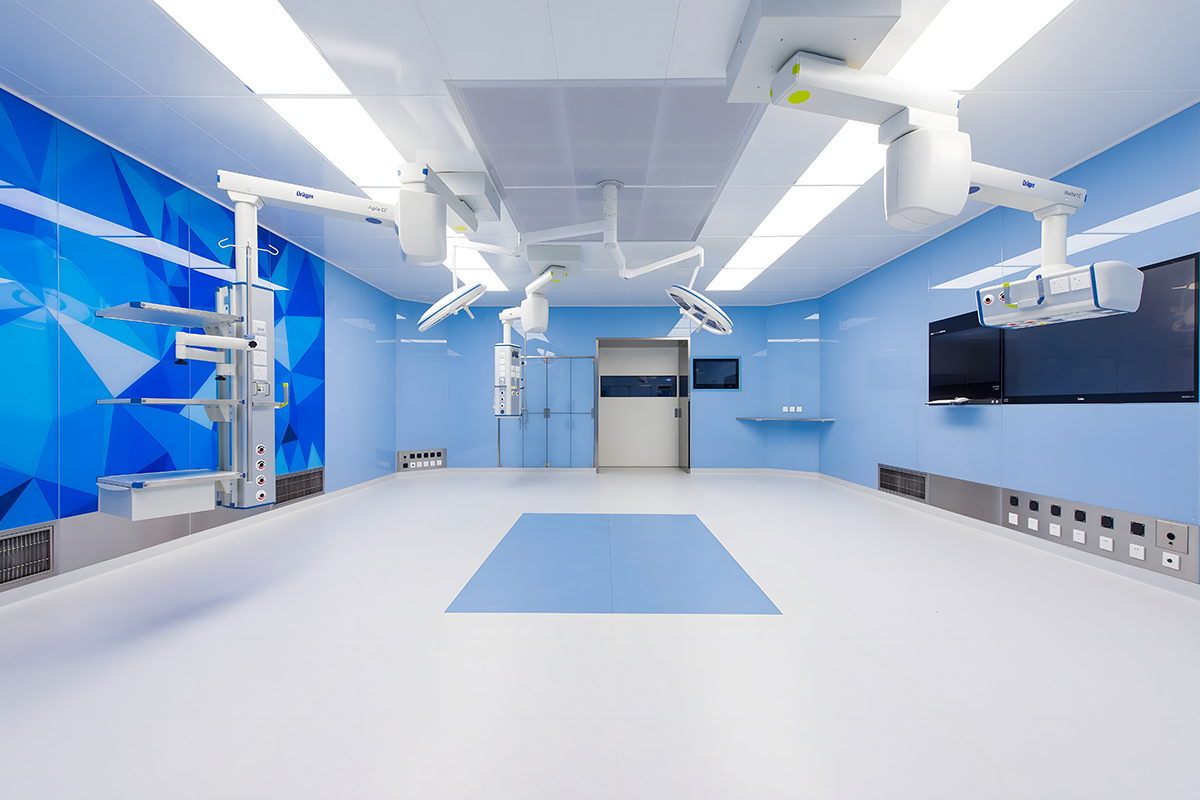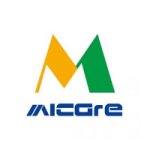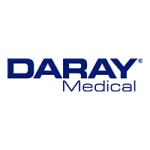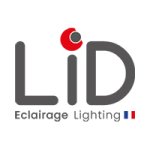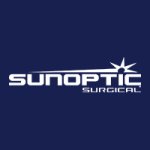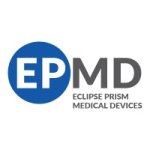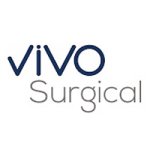Medical lighting
Medical lighting refers to specialized lighting used in healthcare settings to facilitate medical procedures, examinations, and patient care in healthcare facilities by providing reliable, high-quality illumination tailored to the specific needs of healthcare professionals and patients. It enhances visibility, promotes patient safety and comfort, supports diagnostic accuracy, facilitates infection control, improves workflow efficiency, adapts to different medical procedures, and leverages technological advancements to optimize performance. Medical lights can be used for general patient examinations, surgical procedures, minor medical interventions, dental procedures, endoscopic examinations, phototherapy treatments, and more. Medical lighting ensures optimal visibility of the surgical field or examination area, enabling healthcare providers to work with precision and accuracy. Adequate lighting contributes to patient safety by reducing the risk of errors and complications during medical procedures. Additionally, well-lit environments can help alleviate patient anxiety and discomfort, promoting a more positive healthcare experience. Properly designed medical lights are easy to clean and disinfect, supporting infection control protocols in healthcare facilities. Sterilizable medical
lighting fixtures help maintain aseptic conditions in surgical environments, reducing the risk of surgical site infections and other healthcare-associated infections.
Types of medical lights
Medical lights come in various types, including overhead lights for operating rooms and procedure rooms, examination lights for patient assessment in clinics and hospitals, dental lights for oral examinations and procedures, endoscopic lights for visualizing internal body cavities, phototherapy lights for treating neonatal jaundice and skin conditions, and
patient room lights for providing comfort and visibility in hospital rooms.
Examination lighting is used in examination rooms, clinics, and hospitals for general patient examinations. It typically provides adjustable intensity and
color temperature to suit different examination needs, such as general check-ups, dermatological examinations, or ophthalmic examinations. Examination lights for patient assessment in clinics and hospitals are designed to provide focused illumination for healthcare professionals during patient examinations. They come in various forms, such as adjustable
floor lamps or wall-mounted fixtures, allowing flexibility in positioning for different examination needs.
Surgical lighting is designed for use in operating rooms and surgical suites to illuminate the surgical field during procedures. These lights often have a high intensity, adjustable brightness, and precise control over the light's focus and direction to minimize shadows and provide optimal visibility for surgeons. Surgical lights typically consist of multiple individual light sources mounted on a ceiling-mounted or mobile arm system. The positioning of these lights can be adjusted to direct light precisely where it is needed on the surgical site. Some surgical lights also feature adjustable intensity settings, color temperature control, and other advanced features to enhance visibility and reduce glare. Overhead lights for operating rooms and procedure rooms are large, powerful lights mounted on the ceiling to provide bright and uniform illumination during surgeries and medical procedures that require precision and clarity.
Procedure lighting is a type of lighting system designed for use in environments where minor medical or surgical procedures are performed, such as minor procedure rooms, emergency departments, or clinics. While similar to surgical lighting in its purpose of providing illumination for medical procedures, procedure lighting is typically used for less complex procedures and in settings where full surgical lights may not be necessary or available. Procedure lights are equipped with adjustable features to accommodate different procedures and provide sufficient brightness for the tasks at hand. While they may not be as elaborate or complex as surgical lights, they still offer enough flexibility and illumination to support various minor medical interventions or procedures.
Dental lighting is specifically designed for use in dental offices and clinics to illuminate the oral cavity during dental procedures. These lights often feature a small, focused beam of light to provide clear visibility inside the mouth while minimizing glare and shadows. Dental lights are specifically designed for use in dental clinics and offices. They provide concentrated light for dentists to accurately examine the oral cavity and perform procedures such as fillings, extractions, or root canals.
Endoscopic lighting is used in endoscopy suites and operating rooms for procedures involving endoscopes, such as gastrointestinal endoscopy or laparoscopy. These lights are designed to provide bright, focused illumination within body cavities or through small incisions to aid in visualization during minimally invasive procedures. Endoscopic lights are used in conjunction with endoscopes, which are flexible or rigid tubes with a camera attached, allowing visualization of internal organs and cavities. These lights help illuminate the area being examined by the endoscope, enabling doctors to perform diagnostic procedures or surgeries minimally invasively.
Phototherapy lighting is used in neonatal units and dermatology clinics for treating conditions such as jaundice or certain skin disorders. These lights emit specific wavelengths of light to stimulate biological processes or treat medical conditions effectively. Phototherapy lights emit specific wavelengths of light to treat conditions such as neonatal jaundice (hyperbilirubinemia) in newborns or certain skin disorders like psoriasis or eczema. The light exposure helps break down excess bilirubin in the blood or modulate immune responses in the skin.
Mobile or portable lights are lighting systems designed for use in healthcare settings where fixed lighting installations are not feasible or available. These lights offer flexibility and mobility, allowing them to be easily moved and positioned as needed within different areas of a healthcare facility. These lights may come in the form of wheeled stands, which can be rolled to different locations within a hospital room or between rooms, or they may be designed to be carried by hand for greater maneuverability. They are often lightweight and compact, making them convenient for use in various situations. Mobile or portable lights are commonly used for bedside examinations, emergency procedures, or patient transport where access to fixed lighting may be limited or impractical. They provide essential illumination for medical staff to assess patients, perform minor procedures, or administer care in environments where lighting needs can change rapidly or where traditional lighting fixtures are not available.
LED technology has significantly transformed the landscape of medical lighting. It has enabled the development of advanced lighting solutions that meet the demanding requirements of modern healthcare environments. LED lights are far more energy-efficient than traditional lighting sources. This efficiency not only reduces energy consumption but also lowers operational costs for healthcare facilities. Additionally, LED lights have a longer lifespan, reducing the frequency of replacements and minimizing waste. LED medical lights provide superior illumination compared to traditional lighting technologies. They offer brighter, more uniform light, which is crucial for surgical precision and accurate diagnosis. LED technology enables the creation of compact, versatile lighting fixtures that can be easily adjusted and maneuvered. This flexibility is invaluable in medical settings where lighting requirements may vary depending on the procedure, patient positioning, or room layout. The absence of radiant heat in LED medical lights contributes to safer, more comfortable, and more efficient surgical environments, ultimately improving patient outcomes and enhancing the quality of healthcare delivery. By leveraging the spectral engineering capabilities of LEDs, medical lighting designers can tailor the color characteristics of light sources to suit the specific needs of healthcare environments. In medical settings, accurate
color rendering is crucial for tasks such as distinguishing subtle changes in tissue color, assessing the appearance of blood and bodily fluids, and interpreting diagnostic images. LEDs can be engineered to provide high color rendering capabilities, allowing medical professionals to perceive colors accurately and make more informed clinical decisions. Different medical procedures may benefit from different color temperatures. For example, surgical procedures often require cooler, daylight-like lighting to enhance visibility and reduce eye strain, while patient examination or recovery areas may benefit from warmer, more soothing lighting to promote relaxation and comfort. LEDs can be spectrally engineered to produce light at specific color temperatures, ensuring that medical lighting meets the unique requirements of each application. LED medical lights can be seamlessly integrated with other medical technologies, such as imaging systems or surgical robots. This integration enhances workflow efficiency and improves overall patient care.
Features of LED medical lights
LED medical lights are purposefully designed with features that are customized to meet the specific requirements of their intended use in healthcare settings. These features are carefully selected to optimize performance, functionality, and safety. Shadow-free illumination is crucial in medical settings to ensure accurate examination and surgical procedures. LED medical lights are designed to minimize shadows and provide uniform illumination of the surgical or examination area. Special optics or multiple light sources may be incorporated into the design to achieve this goal, ensuring optimal visibility for medical staff. Some LED medical lights offer the ability to adjust the color temperature of the light output. This feature allows healthcare professionals to customize the lighting to match the specific requirements of different medical procedures or patient care settings. LED medical lights are often designed to be easily cleaned and sterilized to maintain a hygienic environment in surgical suites or patient care areas. Smooth, sealed surfaces and durable materials may be used in the construction of the lights to facilitate cleaning and disinfection. Medical lights are often adjustable and easily maneuverable to provide the best illumination angle for different procedures. They may feature flexible mounting options or articulating arms that allow for precise positioning and adjustment of the light source. This allows healthcare professionals to position the light precisely where it's needed without obstructing the workflow. LED medical lights may incorporate user-friendly interfaces that allow for intuitive control of brightness, color temperature, and other adjustable features. Touchscreens, dials, or remote control devices may be used to simplify operation and enhance usability for medical staff. LED medical lights may be designed to seamlessly integrate with other medical technologies, such as imaging systems or surgical navigation systems. This integration allows for synchronized operation and improved workflow efficiency during medical procedures.
Design and construction
The design and construction of LED medical lights is carefully crafted to meet the unique requirements of healthcare environments, ensuring optimal performance, safety, and usability. The heart of an LED medical light is the light engine itself. The light engine typically consists of the LED assembly, optics, and other components that generate and control the light output. This light engine is crucial because it determines the quality, intensity, and characteristics of the light emitted by the device, which is essential for medical procedures where precise and quality illumination is necessary. LED medical lights may incorporate various optical components, such as lenses, reflectors, or diffusers, to shape and direct the light output. These components help achieve uniform illumination of the surgical or examination area with minimal glare and shadows. LEDs produce minimal heat compared to traditional lighting sources, but effective
thermal management is still crucial to ensure safe and reliable operation. LED medical lights may incorporate passive or active cooling mechanisms, such as
heat sinks or fans, to dissipate excess heat and maintain optimal operating temperatures. LED medical lights are built to withstand the rigors of daily use in healthcare environments. They are constructed from durable materials that can withstand impact, vibration, and exposure to cleaning agents. LED medical lights are housed in a durable casing made of materials such as aluminum, stainless steel, or high-impact plastics. The housing provides structural support and protection for the internal components of the light fixture. LED medical lights are designed to meet stringent safety standards for medical devices. Seals, gaskets, and insulation materials may be used to protect the internal electronics from moisture, dust, and other contaminants, ensuring reliable performance and longevity. LED medical lights may include electronic components such as drivers, controllers, and sensors to regulate the power supply, adjust brightness and color temperature, and provide user interface features such as touchscreens or remote control capabilities.
LED surgical lights often incorporate unique design features tailored specifically to the needs of surgical environments. These features distinguish them from traditional lighting options and enhance their effectiveness in supporting surgical procedures. LED surgical lights are often designed with a slim profile to minimize obstruction and maximize maneuverability within the limited space of operating rooms and surgical suites. This allows surgeons to position the lights closer to the surgical field without impeding their movements or causing interference with other equipment. Many LED surgical lights feature articulated arms or joints that provide flexibility and adjustability in positioning the light source. Surgeons can easily adjust the orientation and angle of the light to illuminate specific areas of the surgical field with precision, enhancing visibility and reducing shadows. Some LED surgical lights are designed with multiple light heads or modules that can be independently controlled. This allows surgeons to customize the lighting configuration according to the complexity of the procedure and the specific requirements of different surgical specialties. To maintain a sterile surgical environment, LED surgical lights may incorporate sterile handle controls or touchless operation mechanisms. Surgeons and medical staff can adjust lighting settings using sterile covers or
proximity sensors, minimizing the risk of contamination during procedures. Advanced LED surgical lights may feature integrated camera systems that capture high-definition video footage of the surgical field in real time. These camera systems enhance visualization, documentation, and communication during procedures, enabling better collaboration among surgical teams and facilitating surgical training and education. Some LED surgical lights are equipped with wireless connectivity options, allowing seamless integration with surgical equipment, hospital networks, and electronic medical records systems. Surgeons can remotely control lighting settings and access patient information, imaging data, and surgical plans directly from the operating room.
LED dental operatory lights are specifically designed to meet the unique requirements of dental procedures in dental offices and clinics. These lights incorporate various design features tailored to enhance visibility, flexibility, and comfort during dental treatments. LED dental lights are designed to provide focused illumination directly onto the patient's oral cavity, ensuring optimal visibility for dental procedures such as examinations, cleanings, fillings, and surgeries. The focused light beam helps dentists accurately visualize tooth structures, soft tissues, and dental instrumentation. Advanced LED dental lights utilize specialized optics and reflectors to minimize shadows and glare, providing uniform illumination across the oral cavity. This helps dentists identify fine details and contours within the mouth without obstruction, enhancing diagnostic accuracy and treatment precision. Many LED dental lights feature flexible arms and heads that can be easily adjusted and positioned to provide precise lighting coverage during dental procedures. Dentists can effortlessly maneuver the light source to illuminate specific areas of the oral cavity, enhancing visibility and accessibility during treatments. To maintain a hygienic dental environment, LED dental lights may incorporate sterilizable control buttons or touchless operation mechanisms. Dentists can adjust lighting settings using sterile covers or proximity sensors, minimizing the risk of cross-contamination between patients. Some LED dental lights feature an integrated curing light function, allowing dentists to polymerize dental composites and adhesives directly within the oral cavity. This eliminates the need for separate curing devices, streamlining the dental workflow and improving treatment efficiency. Advanced LED dental lights may offer wireless connectivity options, enabling seamless integration with dental chairs, imaging systems, and electronic patient records. Dentists can control lighting settings and access patient information wirelessly, enhancing workflow efficiency and communication within the dental operatory.
Medical headlights
Medical LED headlights are specialized lighting devices worn on the head by healthcare professionals to provide hands-free illumination during medical procedures, examinations, and surgeries. These headlamps incorporate several unique design features tailored to enhance visibility, comfort, and functionality in clinical settings. Medical
LED headlamps are designed to be worn directly on the head, allowing healthcare professionals to have both hands free to perform medical procedures or examinations. This hands-free operation enhances flexibility and efficiency during tasks that require precision and dexterity.
LED headlamps typically come with an adjustable headband or strap that can be customized to fit comfortably on the wearer's head. The adjustable headband ensures a secure and stable fit, preventing the headlamp from slipping or moving during use. LED headlamps are engineered to be lightweight and compact, minimizing bulkiness and discomfort for the wearer. The compact design allows for easy maneuverability and ensures that the headlamp does not obstruct the wearer's movements or field of view during medical procedures. Some medical headlights offer both spotlight and floodlight modes, allowing healthcare professionals to choose between focused or diffuse illumination depending on the requirements of the medical procedure. Spotlight mode provides concentrated light for detailed examinations or surgeries, while floodlight mode offers broader coverage for general illumination. Many medical LED headlamps feature adjustable brightness settings, allowing healthcare professionals to customize the intensity of the light according to the specific requirements of each task or procedure. This flexibility ensures optimal illumination for different patient conditions and clinical environments.
Medical headlamps are equipped with
rechargeable batteries that provide long-lasting power for extended use during medical procedures. The long battery life ensures uninterrupted illumination throughout the duration of the procedure, reducing the need for frequent recharging or battery replacements. Surgical headlights are often designed to be compatible with surgical loupes or magnifying glasses. This integration enhances the precision and visibility of healthcare professionals, particularly in intricate surgical or dental procedures.
LED examination lights are specifically engineered to provide focused and adjustable illumination for medical examinations in various healthcare settings. These lights incorporate several unique design features tailored to enhance visibility, flexibility, and convenience during patient examinations. LED examination lights are designed to deliver focused illumination directly onto the examination area, ensuring clear visibility for healthcare professionals. The concentrated light beam allows for detailed examination of specific body regions without causing unnecessary glare or shadows. Many LED examination lights feature adjustable brightness settings, allowing healthcare providers to customize the intensity of the light according to the specific needs of each examination. LED examination lights are often designed to be compact and lightweight, making them easy to transport and use in various clinical settings. Their portability allows healthcare providers to perform examinations efficiently in different locations, such as examination rooms, patient wards, or outpatient clinics. LED examination lights typically come with a flexible arm and adjustable head, enabling healthcare professionals to position the light source precisely where it is needed. The flexible design allows for easy maneuverability and ensures that the light can be directed accurately onto the examination area without obstructing the healthcare provider's view.
